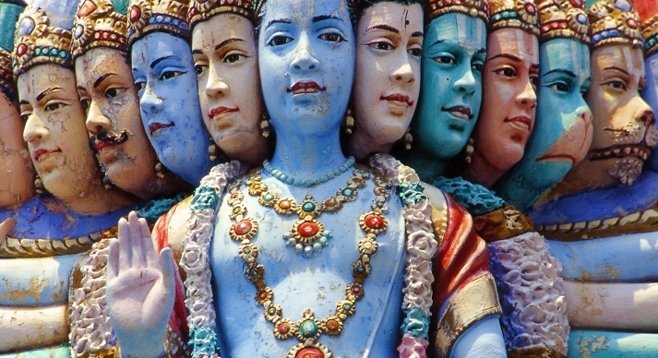 Facebook
Facebook
 X
X
 Instagram
Instagram
 TikTok
TikTok
 Youtube
Youtube

In the midst of the Ocean of Nectar, where covered with groves of heavenly wishing trees is the Isle of Gems, in the mansion of wishing jewels with its grove of nipa trees, on a couch composed of Siva and the other gods, your seat a mattress which is Supreme Siva — some few lucky ones worship you [Devi, Supreme Female Deity], a flood of consciousness and bliss…. With streams of nectar flowing from between your feet sprinkling the universe, recreating through the power of reciting the sacred texts that produce the six circles, again you reach your own abode and into the form of a serpent in three and a half coils you convert yourself and sleep in the kulakunda hollow. — from The Saundarya Lahari (trans. W. Norman Brown).
The Saundarya Lahari or “Waves of Beauty,” is a Hindu literary work considered to be part of the tantric (contemplative) literature of Hinduism. Believed by many to have been written by famous Indian philosopher Adi Shankara (circa 789 A.D.), The Saundarya Lahari contains 103 verses that serve as a paean to the beauty, grace, and perfection of Devi, or Parvati, the divine goddess and consort of Shiva, a supreme being in Hindu mythology. As a tantra, the work also instructs the faithful about religious customs and devotions.


In the midst of the Ocean of Nectar, where covered with groves of heavenly wishing trees is the Isle of Gems, in the mansion of wishing jewels with its grove of nipa trees, on a couch composed of Siva and the other gods, your seat a mattress which is Supreme Siva — some few lucky ones worship you [Devi, Supreme Female Deity], a flood of consciousness and bliss…. With streams of nectar flowing from between your feet sprinkling the universe, recreating through the power of reciting the sacred texts that produce the six circles, again you reach your own abode and into the form of a serpent in three and a half coils you convert yourself and sleep in the kulakunda hollow. — from The Saundarya Lahari (trans. W. Norman Brown).
The Saundarya Lahari or “Waves of Beauty,” is a Hindu literary work considered to be part of the tantric (contemplative) literature of Hinduism. Believed by many to have been written by famous Indian philosopher Adi Shankara (circa 789 A.D.), The Saundarya Lahari contains 103 verses that serve as a paean to the beauty, grace, and perfection of Devi, or Parvati, the divine goddess and consort of Shiva, a supreme being in Hindu mythology. As a tantra, the work also instructs the faithful about religious customs and devotions.
Comments